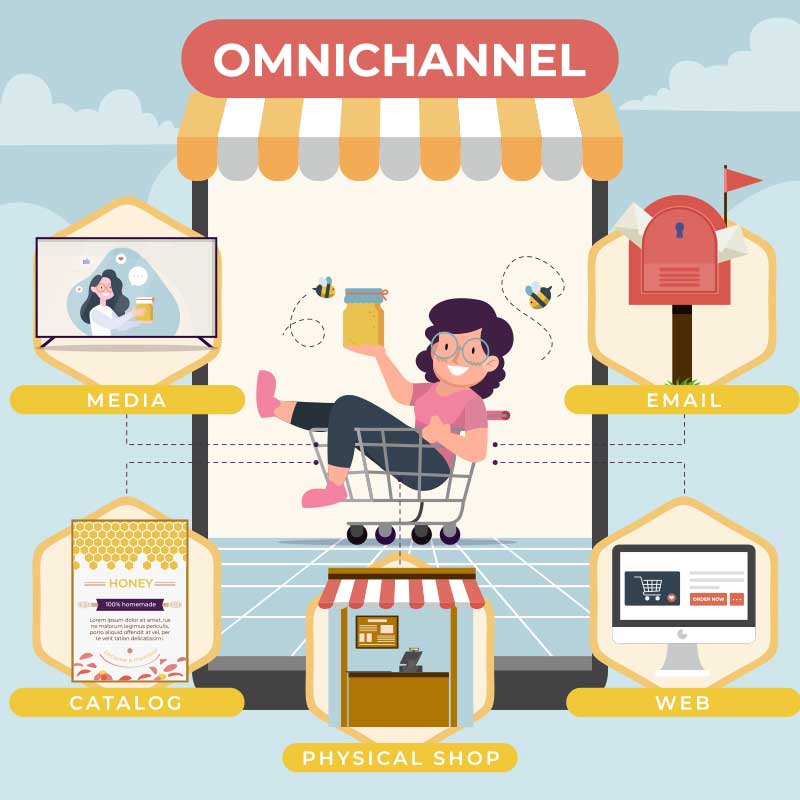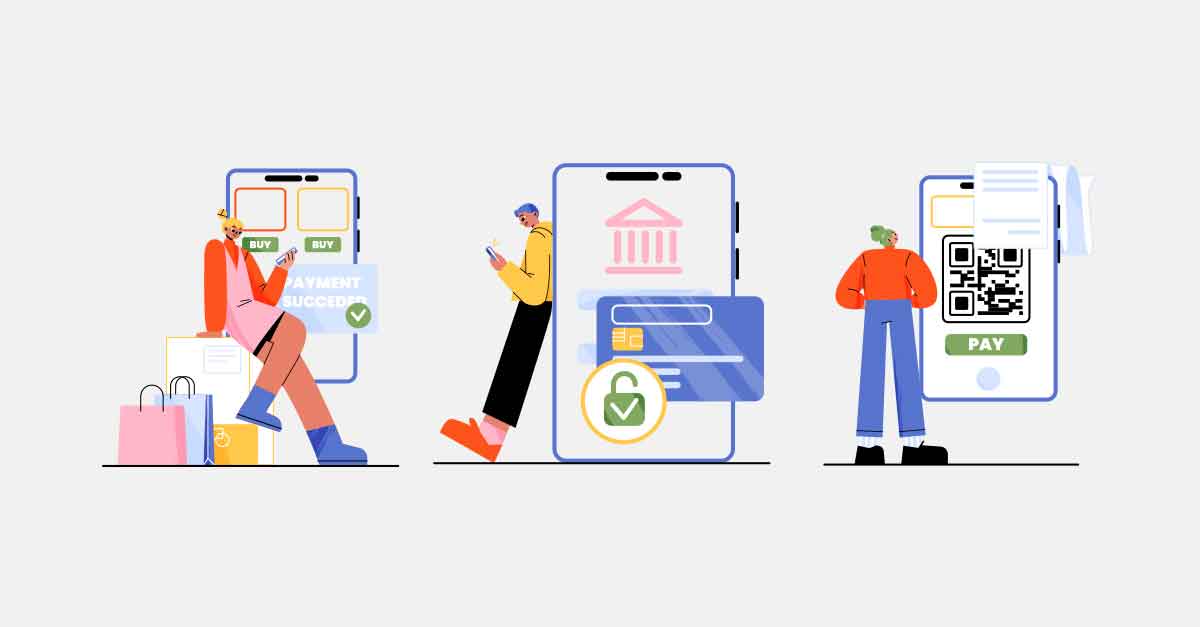Omnichannel Commerce
The eCommerce industry has been rapidly growing, thanks to the convenience and ease that online shopping provides. But now, it’s becoming clear that eCommerce is only the beginning of the true potential the online retail industry can offer.
For a more engaging, intriguing online commerce experience, the next step is to incorporate omnichannel commerce into the mix. This article will let you know all the points you need to move into omnichannel commerce, and grow your business successfully.
What Is Omnichannel Commerce?

It’s no longer enough for retailers to simply have an online presence. Customers expect to be able to shop from anywhere—on desktop computers, mobile devices, tablets, or even in person at a physical location. On top of that, they expect it all to work together seamlessly.
Omnichannel is the best strategy to address this challenge. To put it shortly, omnichannel commerce is an integrated and seamless experience across all customer communication channels. Omnichannel commerce combines all the ways users can interact with a brand and buy products or services.
Omnichannel Commerce vs. eCommerce: What’s the Difference?
eCommerce is the buying and selling of items over the internet. This means that people shop online rather than in person. Buying products on eCommerce platforms like Amazon is an example of the same.
Omnichannel commerce is all about connecting customers with the brand in as many more ways as possible, and that’s not just limited to selling products. Omnichannel commerce includes sales through digital channels, physical stores, and everything in between (such as an email newsletter or social media post).
Businesses can use omnichannel commerce techniques anywhere — on social media via ad campaigns, at physical locations via banner ads, and several more locations both virtual and real. All in all, it helps companies reach customers no matter where they are. Nine out of ten retail leaders believe that a smoothened-out omnichannel strategy is key to success in business.
Why Is Omnichannel Commerce So Important?
1. Increased Sales and Traffic
Omnichannel commerce allow businesses to reach a wider audience of shoppers by offering an array of shopping options, including in-store purchases, online purchases, and phone orders.
It creates more opportunities for making sales and reaching new customers, who otherwise might not be aware of the product or service. In fact, 73% of consumers pursue multiple channels when it comes to shopping.
2. Boosted Customer Loyalty
By offering a consistent experience across all channels, omnichannel commerce can help businesses retain their customers. Customers can get updates from a company on multiple platforms, regardless of which channel they used to reach out initially. In addition, they can receive support across the platforms, irrespective of where the initial request originated.
Such consistency is appreciated by customers, since they don’t want to go through the hassle of defining their requirements or voicing out their concerns repeatedly.
3. Better Data Collection
Omnichannel commerce allows businesses to collect data from all the different customer interactions within the brand’s ecosystem—and then use that data to improve how they do business. This can be done by analyzing click-through rates on email campaigns or understanding how many people are coming to the store after seeing an ad online. With this information, businesses can change how they do things to improve efficiency and profit for everyone involved.
How Can Retailers Change Their Strategies to Incorporate the Trend?
In the past, retailers had to choose between an online or a physical store. Today, they can offer both. The omnichannel commerce model allows retailers to use their online channels to reach customers and sell products while offering convenient offline options for customers who prefer to shop in-store.
To succeed with this type of commerce strategy, however, you need to clearly define your goals and set up a plan that will allow you to meet them. These three steps should help start you off:
Step 1: Define Your Omnichannel Strategy Goals
Set clear goals for each channel—online or offline—and identify how each channel will contribute toward meeting those goals.
Let’s take a case where you set a goal of increasing in-store sales by 15% or improving foot traffic to the physical location by 20%. Then, you need to determine which channels will help you meet those goals. For instance, you might consider mobile marketing campaigns to drive website traffic or in-store marketing efforts to drive foot traffic.
Step 2: Organize Customers by Segment
Once you have defined your omnichannel strategy goals, you can use these goals to organize your customers into segments based on their current shopping behaviors and preferences.
For example, suppose one of your primary objectives is to increase the average order value. In that case, you might create a segment called “High-Value Customers” that includes all customers who have spent more than $500 in the last 12 months and would not hesitate to splurge more in the coming months.
Step 3: Understand Why and How Your Customers Use the Channels They Do
Once you have defined your customers’ segments, you can better determine how to reach them using different channels. For example, if your high-value segment users are more likely to buy products online, you could run an email campaign to alert them of sales or discounts available on the website.
Step 4: Put Your Plans Into Action For Your Channels
In this step, retailers should focus on executing their strategies for each channel. They should ensure that the content and services are consistent across all channels. The goal is to deliver a seamless experience to customers regardless of whether they are shopping online or in-store. This means that retailers need to clearly understand how they want to interact with customers and what kind of content they will put forth on each channel.
Step 5: Set Omnichannel Commerce in Motion by Connecting the Channels
Let’s say someone finds something they like on your website but wants more information before buying it; they click through to inquire by phone or email. You should be able to pick up where your website left off and provide them with additional details about the item or product line without having them start over or fill out multiple forms again.
Omnichannel Commerce as the Driving Force Behind Harmonious Retail
The future of retail is where the customer is at the centre of every decision, from when they express interest in a product to where they make the purchase.
Harmonious retail is a model of retail that approaches the customer as an individual and not just as a number. It combines the experiences of online and offline channels to create an overall experience that adds value to the customer. The ultimate goal of harmonic retail is to create a seamless and satisfying experience at every step.
The Bottom Line
While there may be challenges involved, such as integrating technology across different channels, the results of an omnichannel commerce strategy can speak for themselves. However, as with any significant shift in strategy and technologies, you should seek expertise and assistance from omnichannel experts like Ignitiv.
Connect with us to learn more.








